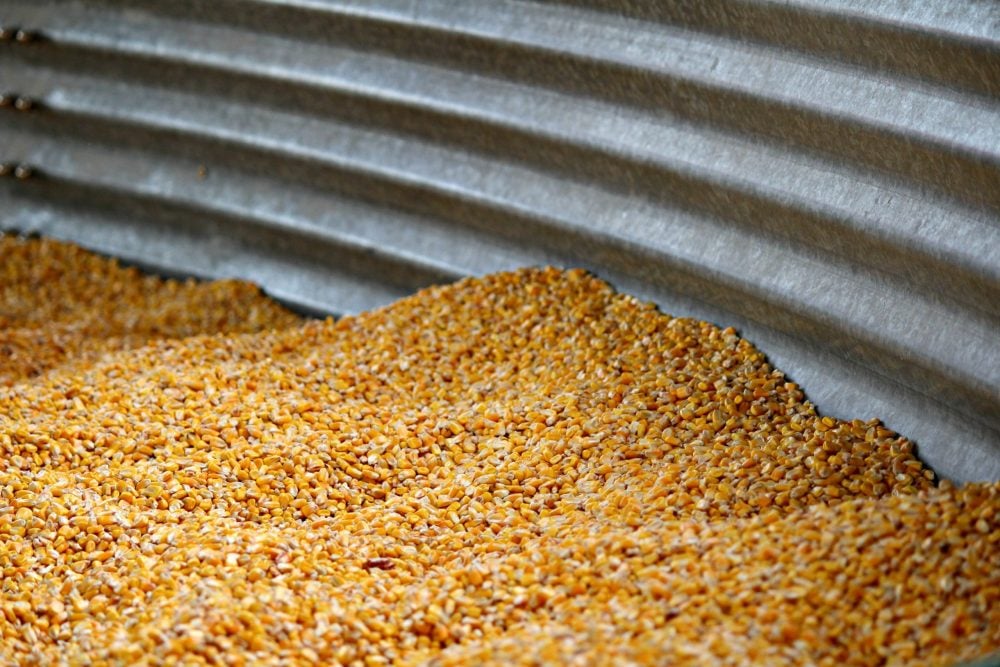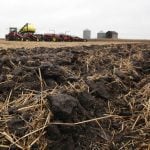U.S. soybean futures soared two per cent on Thursday to post their biggest one-day advance in a month, notching gains for the third day in a row on strong cash basis markets, slow farmer selling and waning harvest of the country’s 2012 crop.
Soybeans have gained more than one per cent for the week and are on track to post the first weekly advance since early September as investors reversed course from 3-1/2-month lows set just a few days ago.
"The harvest is very much wrapping up and producers are closing the bin doors, they’ve stopped selling," said Jason Roose, a co-owner and market specialist for U.S. Commodities in Des Moines, Iowa.
Read Also

Feed Grain Weekly: Demand, activity slowly rising
While demand and activity is slowly ramping up for the fall cattle run, feed grain prices are currently in decline, said a Lethbridge, Alta.-based trader.
"This post-harvest rally will probably continue for the next two to three weeks, maybe gaining 40 to 60 cents from the lows we hit on Monday," he said (all figures US$).
Roose said the rally would be capped by prospects for harvest in early 2013 of a record 81 million-tonne Brazilian soybean crop, a near 22 per cent jump from this past season.
Soybeans also drew support from technical buying and bargain hunting as traders defended the key $15-per-bushel level, an area briefly penetrated earlier in the week.
Soy plunged to a 3-1/2-month low of $14.85-1/2 on Monday, down 17 per cent, or $3 per bushel from the record high of nearly $18 per bushel set in early September.
"The market was very oversold from a technical standpoint," Roose said.
China prospects
Continued brisk sales of U.S. soy to China, the world’s biggest soy buyer, helped buoy the oilseed in addition to lifting corn and wheat, traders and analysts said.
U.S. cash dealers said soymeal spot cash basis offers were steady to higher on moderate domestic demand, strong export demand and tight nearby supplies. Soymeal is the protein additive of choice in most livestock and poultry feeding rations.
Additionally, signs emerged of a rejuvenated soyoil market.
"Soybean oil is looking like it may have formed a trading bottom on the chart and it has moved higher this week," said Bill Nelson, oilseeds analyst for Doane Advisory Services in St. Louis, Missouri.
"It does comprise a significant portion of the value of the soybean," he said.
Spot soyoil spiked to a session high of 52.39 cents per pound, a three-week peak and up six per cent from Monday’s 3-1/2-month low of 49.41.
Corn rose two per cent, gaining for a third straight session. Wheat increased for the second day in a row, rallying over one per cent, buoyed by concerns over dry weather in Australia and the United States, the top two exporters of the grain.
Chicago Board of Trade (CBOT) November soybeans were up 2.4 per cent or 36-1/4 cents per bushel at $15.45-1/2, December soymeal rose 1.89 per cent or $8.60 per ton to $463.30 per ton and soyoil for December delivery was up 2.49 per cent or 1.27 cents per lb at 52.3 cents/lb.
December corn rose 2.05 per cent or 15-1/4 cents per bushel to $7.60-3/4 and December wheat gained 1.43 per cent or 12-1/4 cents at $8.68-1/2 per bushel.
Spot basis bids for corn and soybeans were steady to firm in the interior U.S. Midwest as the harvest of both crops began to wind down and farmer selling slowed, cash dealers said.
November milling wheat in Paris added 1.36 per cent at 260 euros a tonne, as spillover support from the U.S. market offset the impact of strength in the euro.
U.S. harvest near end
"We are getting on the back side of the soybean harvest so there should be some abatement of the typical harvest pressure even in this short crop year," Nelson said.
U.S. farmers have been harvesting soybeans and corn at a record-fast pace due to early seedings and because the worst drought in more than 50 years pushed each crop to early maturity.
Lowered production due to the drought also allowed harvesters to move through the fields at a faster-than-normal pace.
The U.S. Department of Agriculture on Monday said 71 per cent of the soybean crop had been harvested, up from the 58 per cent five-year average, and 79 per cent of the corn crop had been gathered, well above the five-year average of 38 per cent.
— Sam Nelson writes for Reuters from Chicago. Additional reporting for Reuters by K.T. Arasu, Karl Plume and Julie Ingwersen in Chicago, Ayesha Rascoe in Washington, Gus Trompiz in Paris and Naveen Thukral in Singapore.














